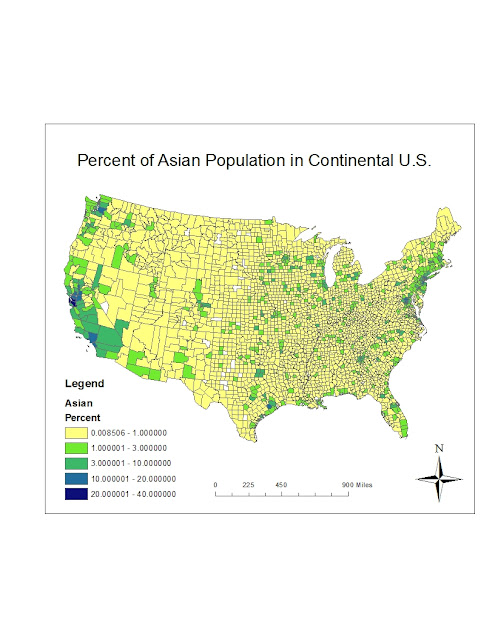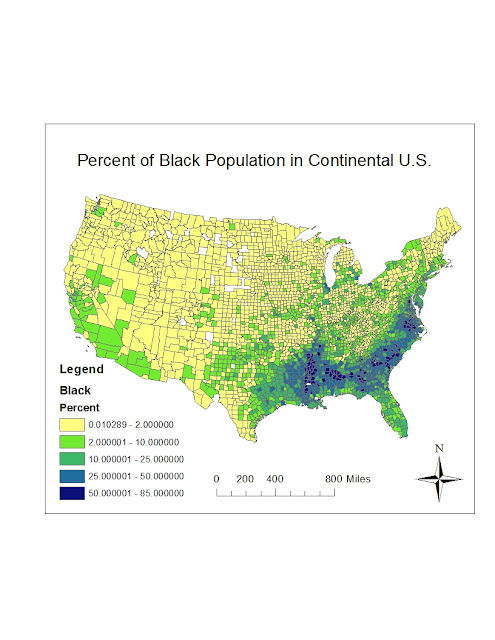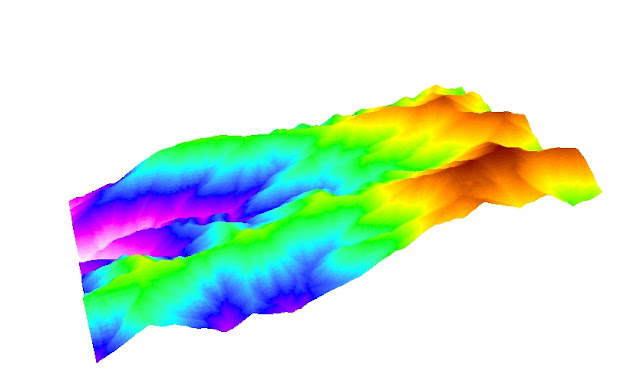The map above depicts the distribution of the "Black" population throughout the continental United States using Census data from the county level. As seen on the map, the "Black" population is predominantly found in the Southern States, a consequence of our slavery practices in the past. In fact, the "Black" population is the majority (50%+) in many counties in the southern region. Along with some northern migration, the "Black" population has significant presence in Florida and Texas. The state of Michigan also contained a significant presence of "Black" population. Except for a presence in southern and central California, the "Black" population is scarce in the West.

The map above depicts the distribution of the "Asian" population throughout the continental United States using data from the U.S. census at a county level. As the map illustrates, the Asian population is predominantly located on the West Coast, especially in California. Although there is an Asian presence throughout the entire California, there are very few counties with at least 10% Asian population. There is, however, a county with over 20% Asian population in northern California. The Asian population also has a presence in northern Oregon and Washington. Other than a significant presence on the West Coast,there is a region of significant Asian population in the Northeast as well.
The map above depicts the distribution of the "some other race" population in the continental United States, based on county level data from the U.S. Census. The map shows that there is a strong presence of "some other race" populations throughout the West and Southwest but there is little to no presence of "some other race" populations on the Eastern half of the United States. California has a strong presence of "some other race" populations, with several counties having over 25% populations. New Mexico and Texas also have widespread presence of "some other race" populations. Both states have many counties with at least 15% and some with over 25% of the population. If there is any significant region with "some other race" populations east of Texas it would be Florida. Although the density is only 3-7% , there is a good portion of the state with a presence of "some other race" populations.
My experience throughout this lab was very pleasant. Although there were some technical things to learn along the way, the overall product was very impressive. Once you lean how to save and add data sets it is pretty amazing what you can do in a relatively quick manner. This lab has further demonstrated the immense potential of ArcGIS. The ability to change breakpoints for the data in order to better illustrate distribution was very helpful and useful in order to demonstrate differences between regions. The use of different color ramps was also very helpful in visually demonstrating the differences among regions. When provided with data sets such as those developed by the U.S Census, ArcGIS is extremely capable of mapping that data and illustrating patterns throughout regions.








+Lambert+Conformal.jpg)


